John Sainsbury was a towering figure, literally and figuratively, dominating and defining the most important period in the rise of the supermarkets through his vision and attention to detail
In the rise of the UK supermarkets John Sainsbury (1927-2022) stands alongside Jack Cohen (1898-1979) and Ken Morrison (1931-2017) as one of the true giants of grocery.
And all the qualities that were to make JD (as he was known) so successful were evident in his first “serious” job at the family firm, as a biscuit buyer.
Sainsbury had joined in 1950, after national service and university, the first of the fourth generation of the family dynasty. And moving into trading, he soon realised how much he enjoyed being a buyer.
“It was competitive. And I liked the fact that attention to detail produced results,” he recalled in an interview with The Grocer for its 150th anniversary.
JD relished the challenge of “getting round” the suppliers. And he “never took no for an answer”.
As a buyer, Sainsbury was determined to make a difference not only for the business but for the shopper. Switching to a role as a bacon buyer, in 1956, Sainsbury recalls with pride his development of Sainsbury’s Tendersweet bacon, an early example of what today we call premiumisation.
“It was the first time anyone had produced anything other than Wiltshire bacon. There were real stick-in-the-muds in the UK, wanting an easy life – the main activity was to negotiate between the ministry and the farmers, and they made a total mess of that.”
So he cut them out.
“We were very impressed with the Canadian bacon packers,” he recalled, “so we formed a joint company [Haverhill Meat Products], to produce Tendersweet bacon. It was the first well-packaged sliced bacon – and it was well-suited to the modern era.”
A pre-packed, quality bacon was perfect for the first grab and go shoppers of the modern supermarket age. And those formative years as a buyer stood him in good stead as JD rose up the ranks, as the UK emerged from war-torn Britain with an appetite for change.
Snapshot
Name: John Davan Sainsbury
Title: Baron Sainsbury of Preston Candover
Born: 1927, eldest son of Alan Sainsbury (Baron Sainsbury of Drury Lane)
Education: Stowe and Worcester College, Oxford (reading history)
Career: joined Sainsbury’s in 1950. Moved into trading as a biscuit buyer. Appointed to the board in 1958. Served as chairman and chief executive from 1969-92. Appointed life president in 1992
Honours: knighted in 1980 and made a life peer in 1989 and a Knight of the Garter in 1992.
Status: married ballerina Anya Linden in 1963
Children: Sarah, Julian and Mark
Appointed to the board in 1958, JD’s drive and progressive ideas meant he gradually assumed responsibility for trading from his father. One of his earliest battles was internal: persuading the board to sell ‘non-food’. As a ‘high-class provisioner’ (rather than a grocery store) the foodies on the Sainsbury’s board were concerned that all the shampoos and detergents would taint the taste of its foods (which were scrutinised and evaluated to industry-leading standards at Sainsbury’s ‘Laboratories’). JD won the day with his insistence that the modern housewife wanted the convenience of a one-stop shop.
Sainsbury also seized on the opportunity afforded by greater disposable incomes, increased fridge ownership and package holidays, titivating the shopper’s hunger for novelty with its burgeoning range of fresh and packaged goods, and sourcing increasingly exotic items around the globe: macadamia nuts from Hawaii; ice cream from the US; fromage frais from France. Yes, that was once a novelty too.
Of particular importance was the growth and development of Sainsbury’s range of iconically designed own-label goods, which not only helped to maintain value but drove innovation: by 1967, over 50% of sales came from own-label products, now some 1,000-strong. And each of them was personally signed off by JD to ensure that quality was as high or higher than branded equivalents.
Closer to home Sainsbury’s also developed the first all-self-service fresh-meat department – with butchers preparing a variety of jointed and pre-packaged cuts screened off from the sales areas by glass rather than hidden from view, to demonstrate to customers that modern merchandising wasn’t at the expense of freshness.
His pioneering work on the buying side also included successfully campaigning against an alliance of brewers, off-licence shops and hair shirts to secure an alcohol licence in its branches. Starting with a small selection of beers, wines & spirits, the range grew and flourished under JD’s direction, helped by labels that educated shoppers on the own-label new wines it sourced from across the continent.
Public face
The role of head of trading also brought responsibility (at the time) for all of Sainsbury’s marketing activity. Almost by default it meant JD was the public face of the business – a role he embraced with enthusiasm, greeting customers at regular new store openings, and courting the tabloids with photo opportunities.
Increasingly visible, ferociously ambitious and so clearly capable, it was hard to contain the strapping scion. After his father retired in 1967, Sainsbury reported into his uncle Robert as deputy chairman. And two years later, Sainsbury’s centenary year, his destiny – to lead the family business – was fulfilled as Robert stood aside.
It was an opportunity JD seized with both hands. With rivals growing at a rate of knots and the majority of Sainsbury’s stores still small and counter-based, he set about transforming the estate, using the proceeds from the sale of stores unsuitable for conversion to self-service to help accelerate the supermarket opening programme.
The aim was not to be the biggest per se. At a meeting of senior managers that year he vowed: “Our prime motivation in the business is the search for perfection. We have no ambition to be the largest food retailers in this country, but we are totally set and determined on the course of being the best… giving our customers the best value possible, not only in the quality and price of the goods, but in the manner and style of the service. In achieving this, our trade not only will grow, but must grow to make it possible.”
“We have no ambition to be the largest food retailers in this country, but we are totally set and determined on the course of being the best”
Lord Sainsbury, 1967
And grow it did. The figures are astonishing: in the next 23 years the number of supermarkets in the estate increased from 82 to 322, each store seemingly bigger than the last. Sales rose from £166m to £9.2bn (a compound annual growth rate of 19%), and profits increased from £4.3m to £628m (a CAGR of 24%), as it overtook Tesco and Marks & Spencer to become the UK’s largest and most profitable retailer respectively.
Among the countless store-based initiatives and innovations one of the most visionary was the launch of the UK’s first hypermarket. Savacentre, a joint venture with British Home Stores (which supplied the fashion lines) opened its first branch just outside Sunderland in 1976 – 21 years before the first Tesco Extra. And the focus on ever larger stores also ensured that, despite higher store headcounts and store costs than rivals, its margins, from having been among the lowest in the trade, were the highest, topping out at over 7% in the year before his retirement.
Also visionary was the share ownership scheme that he set up for staff when Sainsbury’s went public in 1973. The UK’s largest ever listing at the time, it was dubbed the ‘Sale of the Century’ by the tabloids and was “the single most important moment” in the company’s history, Sainsbury recalled in his interview with The Grocer.
“We were expanding fast and wanted our staff and customers to share in our success. We did great things to make it easy for our staff and small shareholders to buy shares. This was very good for the morale of the company – they saw a huge gain, as the share value went up many times over a long period. Our shares didn’t do brilliantly initially, but that was to change. We believed in profit-sharing – what people now call bonuses – and it benefited all our staff.”
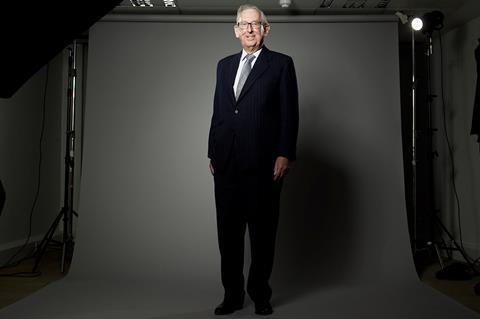
Sainsbury was also ahead of the game when it came to its supply chain. Another early battle he won was introducing the first depot outside London. He was also an early advocate of mainframe computers, while envisioning as early as 1967 how mini-computers, barcode scanners, big data and credit cards would one day transform retailing, in a briefing to store managers.
“The checkout would be automatic; the customers would place their purchases on a moving belt and, as the products went along the belt, a code would be read from the label by a mini-computer at each checkout, which would total the customer’s purchases and pass the information automatically to the customer’s bank, initiating the necessary transfer of funds. At the same time it would be able to pass the information to the depot computer to calculate the order to our suppliers.”
It wasn’t until the 1980s that much of this innovation was even possible. In the meantime, Sainsbury’s developed SLIM, an innovative branch-ordering system, based on electronic data, which hugely improved stock management.
But JD credited its deployment of barcode scanners in the early 1980s as the most important innovation introduced by Sainsbury’s. “We were ahead of our competitors in bringing in scanning. We got on to the idea before anyone had seen what was going to happen. We did it with two or three shops and realised how brilliant it was and invested ahead of the game. It gave us a huge advantage.”
Tour visits
With a booming voice, and an authoritarian manner, JD was an imposing figure within the business. And his exacting shopkeeping standards and attention to detail could invoke terror among store managers and staff, as he arrived, unannounced, on his legendary store visits. But the visits also motivated and inspired staff, with his acute observations – sometimes from the other end of an aisle – and his willingness to tackle problems that been identified back at head office – demonstrating to all that ultimately he was there to help.
Lord Sainsbury could also be hugely charming (with customers and royalty too). And while no-one ever doubted who was in ultimate charge, Mr JD was also hugely committed to training and empowering managers, realising that the sheer size and growth of the business meant decision making needed to be pushed down the chain of command.
He also hugely appreciated the loyalty, service and commitment of staff, setting up and joint-chairing long after his retirement, the Sainsbury’s Veterans Association, a network and support group for the 23,000 staffers who had served continuously for more than 25 years.
For as long as JD was running the show, Sainsbury’s seemed unassailable as the UK’s number-one supermarket. In the last six years of his reign, sales and profits more than doubled. But after he stood down in 1992 Sainsbury’s quickly seemed to lose its way, overtaken and outshone by Tesco’s transformation from the early 1990s, first under Lord McLaurin and even more so under Sir Terry Leahy.
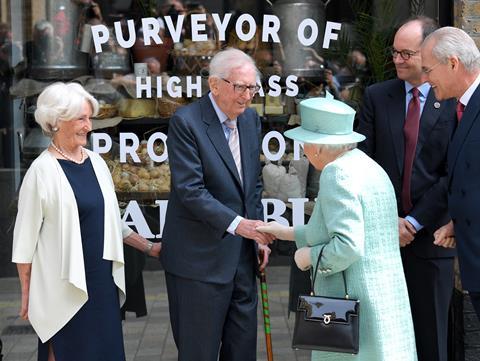
As Tesco sales soared, a series of own goals and missteps, initially under the more consensual leadership of his cousin David, and later under a succession of disastrous non-family CEOs, saw Sainsbury’s sales and profits flounder.
That was “a very painful period”, Lord Sainsbury later recalled, “all the more so as I know I must bear responsibility for the structure that I left in place in 1992.”
Yet his “distress” was hardly surprising. While other family members went into politics, this was more than a job in the family firm, or an asset class for the family’s wealth to be invested in. Sainsbury’s was his life’s work. As Sir Ron Griffiths, one of his MDs wrote, on Lord John’s retirement: “No senior member of a family ever cherished the family traditions more closely. No Roman ever guarded the household gods more zealously, no chairman has ever looked after the corporate values so committedly, and nothing has been too much, no generosity too great for people who serve the customer, and by definition the company, well.”
A similar attitude prevailed when the Qatari royal family started building a stake in Sainsbury’s in 2007. Amid huge speculation of an impending takeover bid Lord John was said to have vowed that he would not sell his stake in the business at any price.
Lord Sainsbury kept a close watching brief on the family business almost to the end. He accompanied ex-CEO Justin King on store tours every six months, “walking every aisle”. Occasionally he also attended the IGD’s annual convention, listening quietly but attentively at the back – where once he would have stood centre stage and held court.
At the 150th anniversary celebration in 2019 he also joined then CEO Mike Coupe on a store tour of the newly refurbished Nine Elms store he had opened 37 years earlier – before greeting the Queen at a party in a recreation of the store where the Sainsbury’s story began.
What a fitting finale.
Britain’s Greatest Grocer: industry figures pay tribute
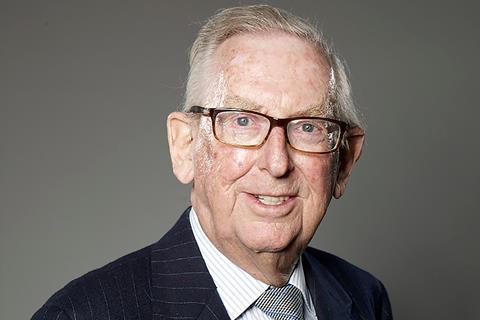
Clive Black, Shore Capital:
John Sainsbury was to grocery retailing what Alex Ferguson became to top-flight football. I consider him to be the most influential and greatest British grocer of all time. He had it all.
Justin King, ex-CEO, Sainsbury’s:
No-one has had a greater influence over the modern supermarket we know today than JD. Computerisation. Self service. Own label. Public and employee share ownership. All radical innovations in their time. The supermarket we shop in today was shaped by his leadership in a profound way.
Charles Wilson, ex-CEO, Booker:
Lord John could see Sainsbury’s through the eyes of the consumer. He understood that all parts of the retail journey had to be spot on. His standards, attention to detail and pride in his family business [turned] Sainsbury’s into one of the greatest retailers on the planet in the 1970s and 80s. His contribution to Sainsbury’s heritage, retail and the UK was massive.
Jon Hartland, Sainsbury’s Veterans Association:
With due respect to all the greats that went before, this is the guy. There will be nobody else like this guy. I have a vision of Lord Sainsbury arriving at the big supermarket in the sky and the Tannoy announces: ‘Will all department heads report to their stations. The manager is here.’







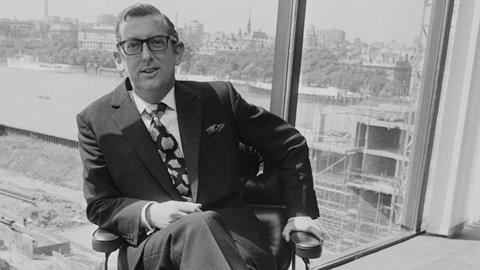


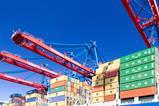
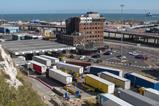

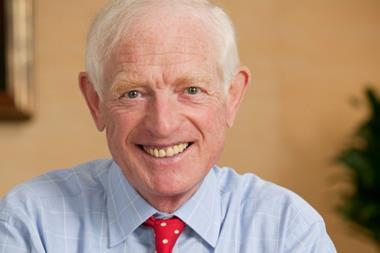
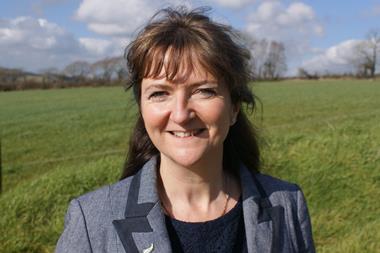


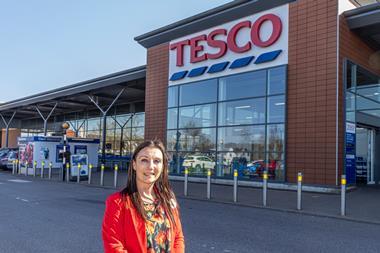
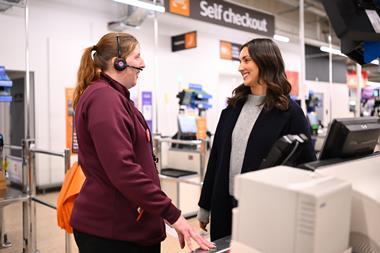


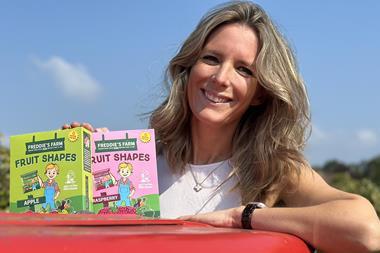



No comments yet